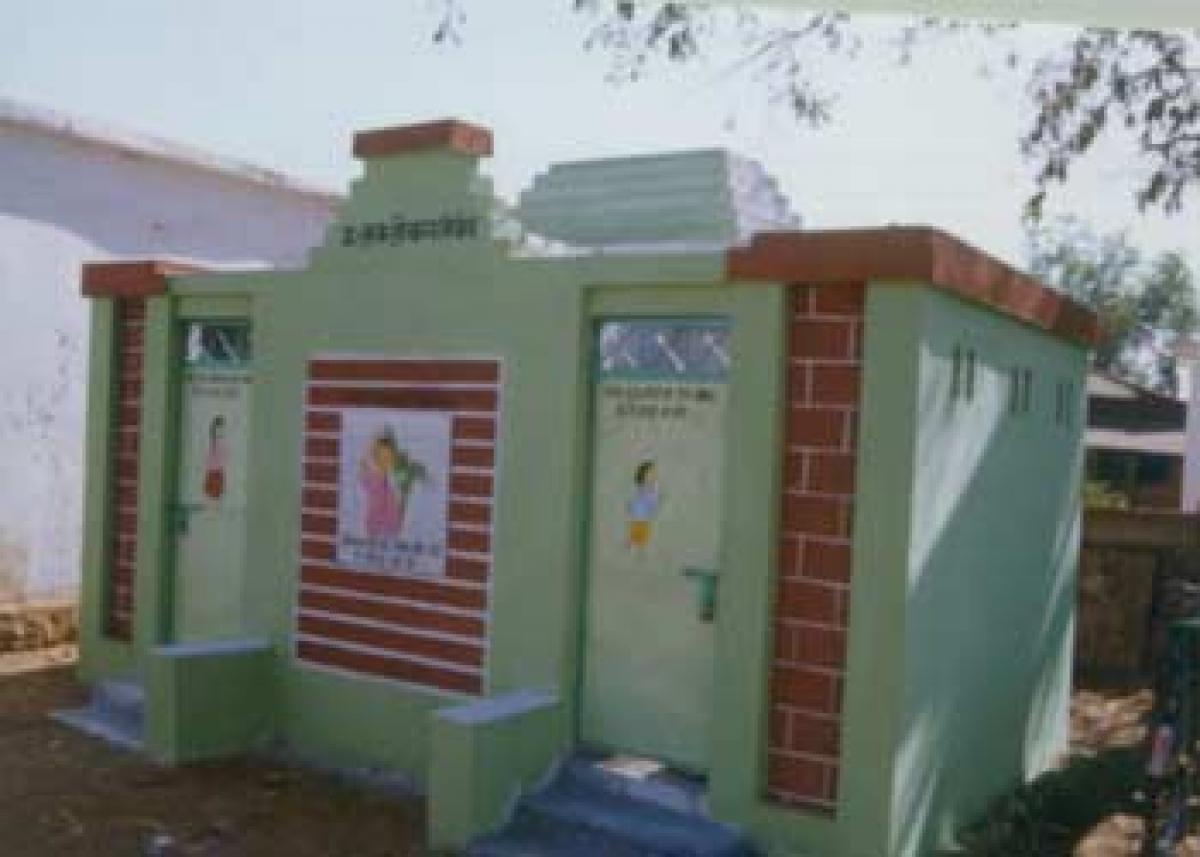Live
- AAP Announces Final Candidate List For 2025 Delhi Assembly Elections, Kejriwal To Contest From New Delhi
- Bangladesh unrest has delayed execution of some vital projects: Tripura CM
- PIL in SC seeks direction to designate BMC as sole planning, sanctioning authority for Mumbai
- 3rd Test: Centuries from Head, Smith help dominant Australia feast on listless India
- AAP final list of 38 names in Delhi: Kejriwal, CM Atishi retain seats
- Tributes Paid to Sardar Vallabhbhai Patel on His Death Anniversary at CM Revanth Reddy's Residence
- In just one year, Bhajanlal govt wins hearts of people
- CM Chandrababu announces establishment of Potti Sriramulu Telugu University
- Sutume, Kissa win World 25K Kolkata; India's Gulveer makes course record
- US accounts for 18 per cent of Indian exports in FY24
Just In

Back to toilet school. Last August 15, speaking from the ramparts of the Red Fort, the Prime Minister made a very important announcement—his government would ensure “there is no school in India without separate toilets for boys and girls” by the next Independence Day.
 Last August 15, speaking from the ramparts of the Red Fort, the Prime Minister made a very important announcement—his government would ensure “there is no school in India without separate toilets for boys and girls” by the next Independence Day.
Last August 15, speaking from the ramparts of the Red Fort, the Prime Minister made a very important announcement—his government would ensure “there is no school in India without separate toilets for boys and girls” by the next Independence Day.
Exactly one year later, the Ministry of Human Resource Development has announced that this target has been met and that some 4,17,000 toilets have been built in 2,61,000 schools.
This is no mean achievement, especially given the dire urgency and importance of this task. The fact is that lack of sanitation facilities is a reason for high dropout rates in schools—particularly of girls.
It is also linked to higher disease burden. It is a basic human need—as basic as eating or breathing—and needs to be secured for human dignity. Most critically, toilets in schools are potential game-changers in society: quite simply, children learn the value of personal hygiene and bring it home.
School toilets are harbingers of tomorrow’s India. So, it must be asked if the target has really been met or is this just about numbers. To know this, the related question is: are the toilets that have been built at this breakneck speed in use? Do they have running water; is there provision for regular cleaning and maintenance? Only then can we boast that the task is done.
The government, while claiming 100 per cent success, says that it has repaired some 1,51,000 toilets and built the rest anew. On its website, it also explains that if anybody would like to volunteer to build toilets in schools, then it can provide designs.
The cost of each toilet ranges from Rs 80,000 to Rs 1,30,000. In addition, it says that a hand pump—in cases where there is no piped water—and water tank will be needed, costing Rs 80,000, and another Rs 20,000 per year will be required for maintenance.
The original plan was that corporate India would scale new heights and build these toilets. That has not happened. Private companies have been miserly and public sector undertakings are struggling to meet their school toilet commitments.
Funds however have not been the constraint. The last government’s Sarva Shiksha Abhiyan—a scheme to enforce the right to universal primary education—includes substantial money for civil works to build school infrastructure, including toilets.
In February this year, the government extended the provision to include reconstruction of dysfunctional toilets as well. It is also to the credit of the government that it did not lose sight of the importance of this task. The Prime Minister’s Office, it is said, monitored week-by-week progress.
The deadline was clearly on everybody’s mind. My colleagues have calculated that some 2,850 toilets were built each month between August 2014 and March 2015. As the deadline came closer, construction moved to feverish pace.
Between April and August this year, some 100,000 toilets were built each month. This, in itself, is not bad. It could be that the government ramped up its capacity; it wanted to ensure it reached its goal.
But it is exactly because of all this that we must ask again: are the toilets functional? Frankly, there is no information about this in any report of the government. But media reportage from across the country suggests there is still a long way to go before we can talk about total sanitation, even in schools.
More importantly, there is the matter of where the waste goes and how it is treated. So, building a receptacle to collect human excreta is only a small part of access to sanitation.
Now the question is: how do schools plan to maintain hese facilities; who will hold them accountable and how will this be reported? The fear I have is now that the task is shown as completed—it is checked and off the agenda—there will be little attention to the crucial detail that is everything between success and failure—not just a toilet but a working toilet, which is used and cleaned. This is what total sanitation is about. This is the least we can provide to our children.
By Sunita Narain

© 2024 Hyderabad Media House Limited/The Hans India. All rights reserved. Powered by hocalwire.com







